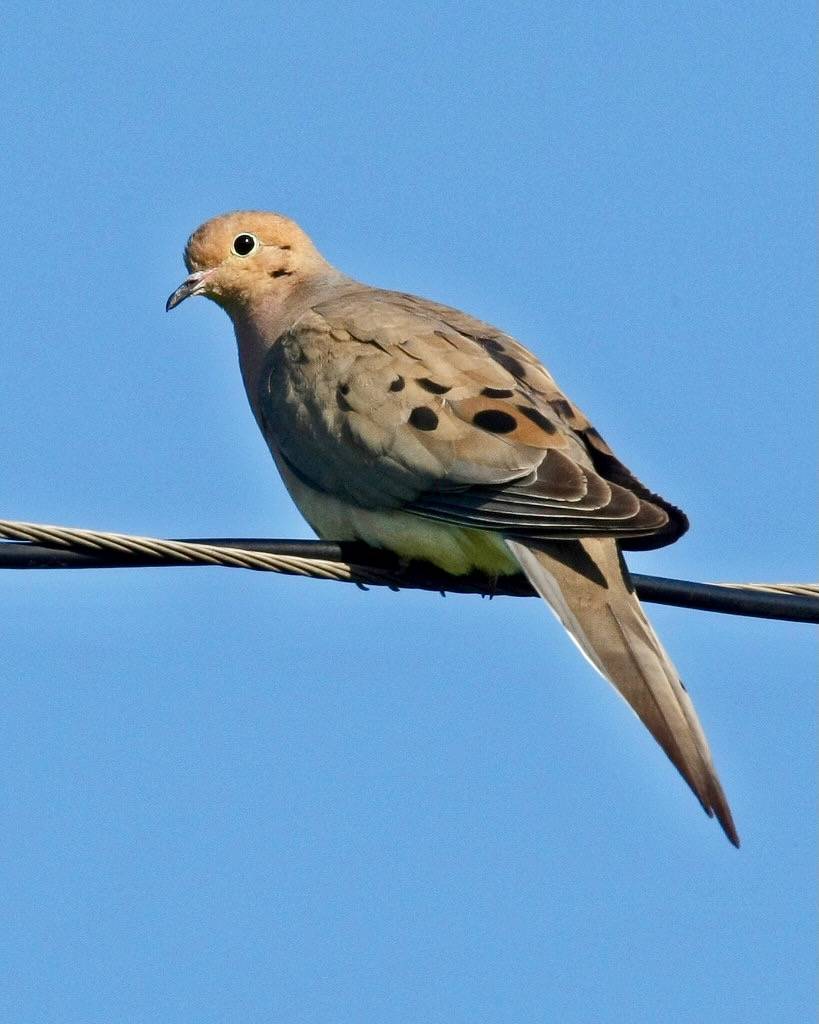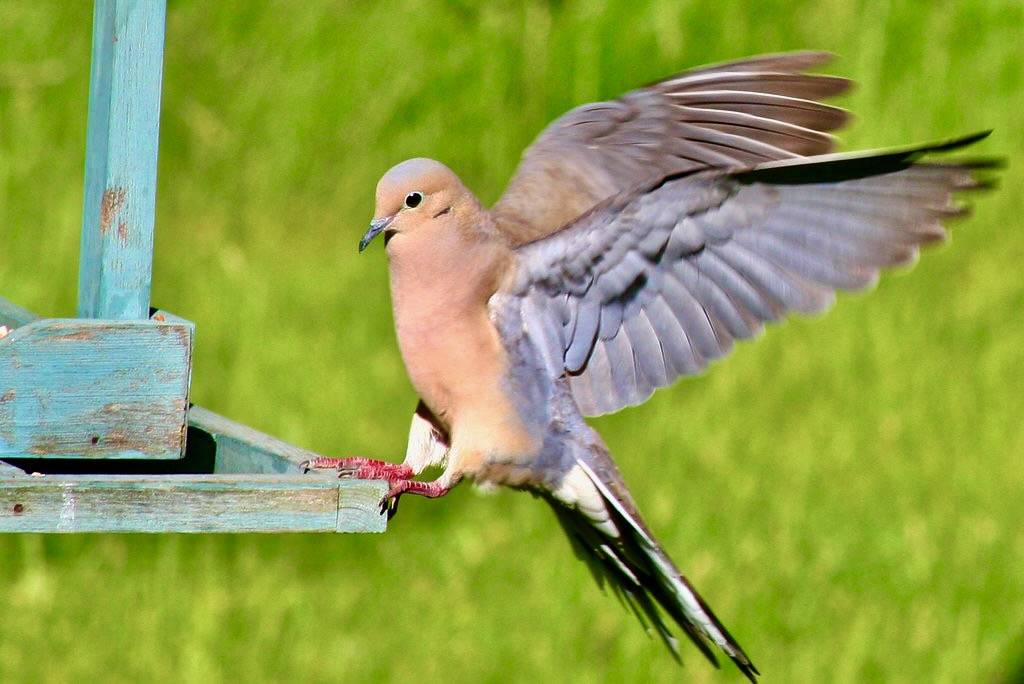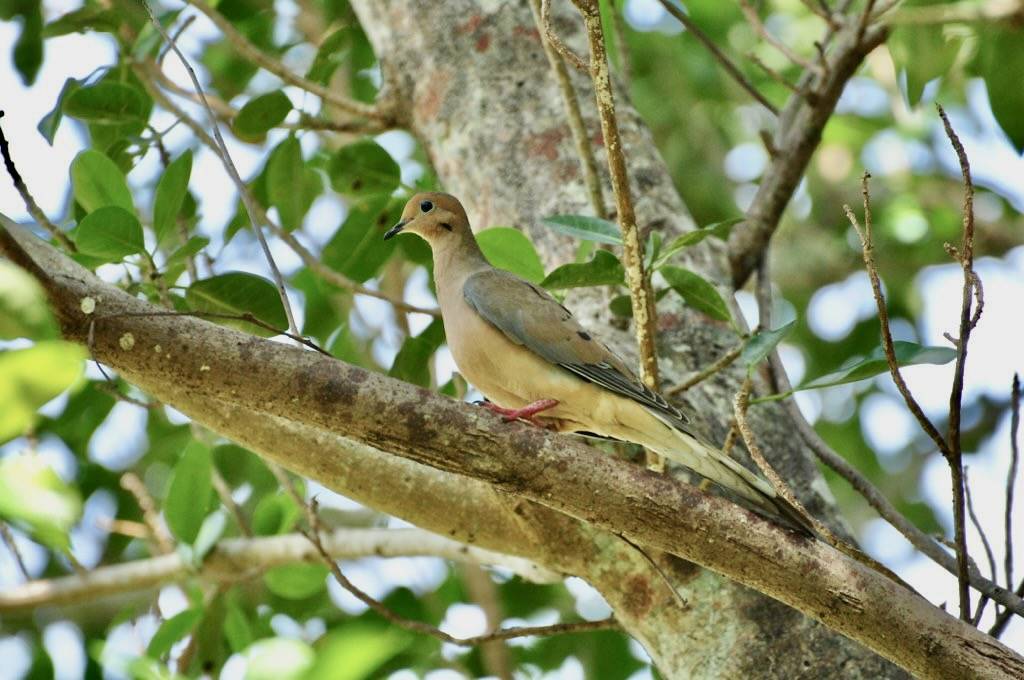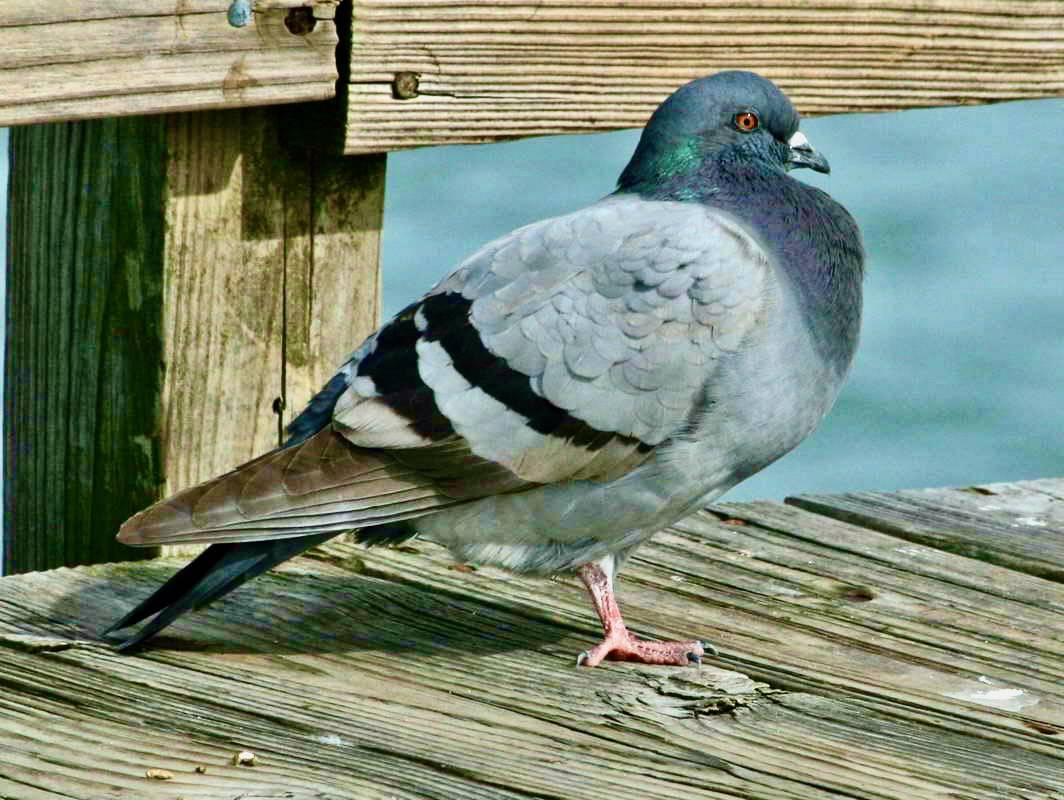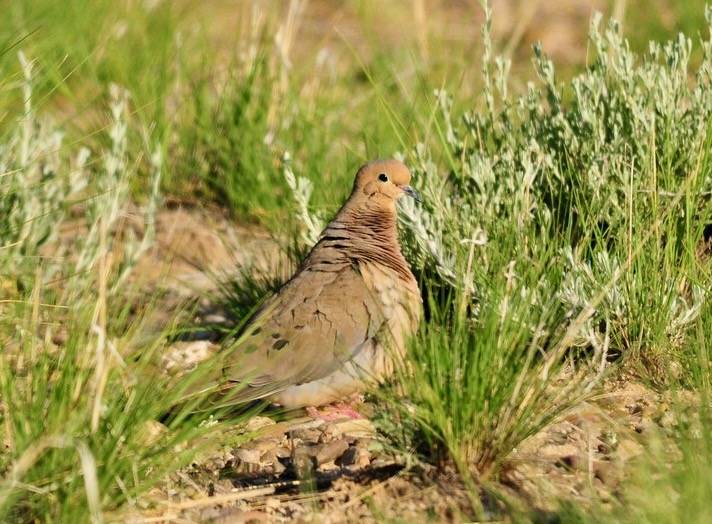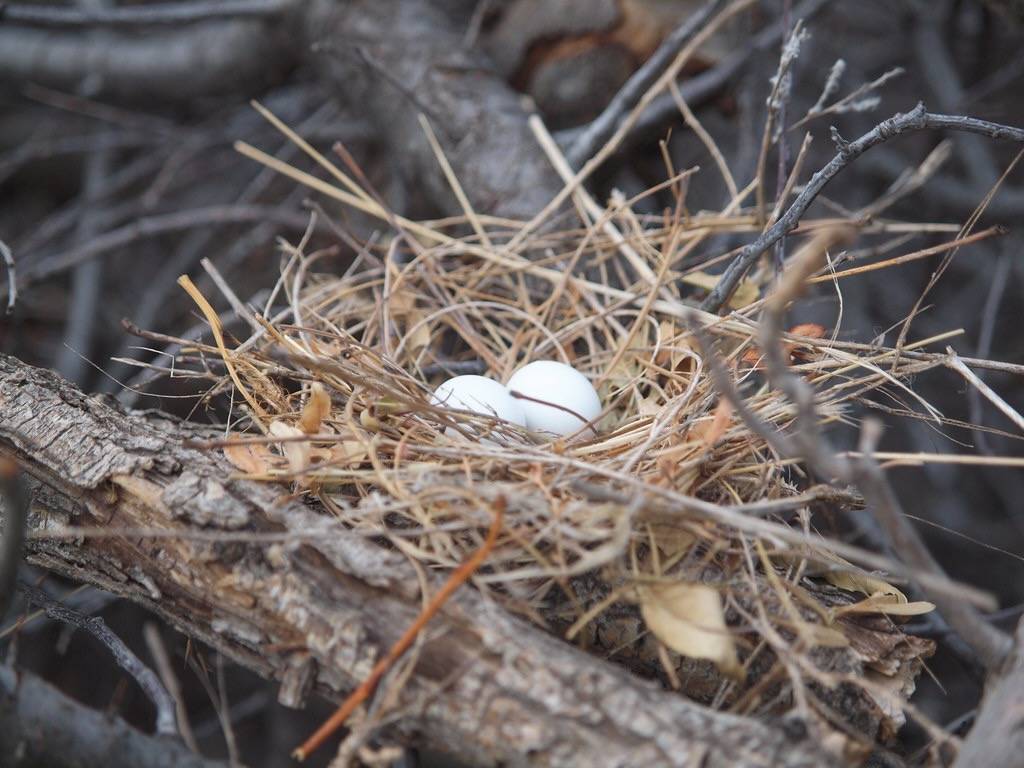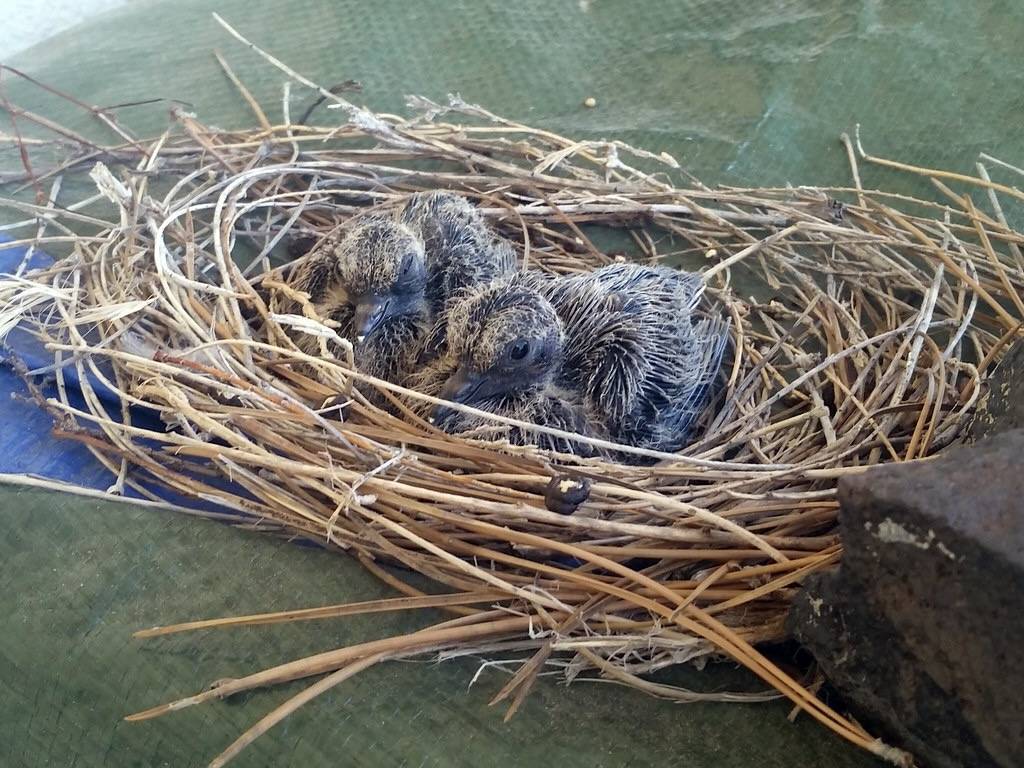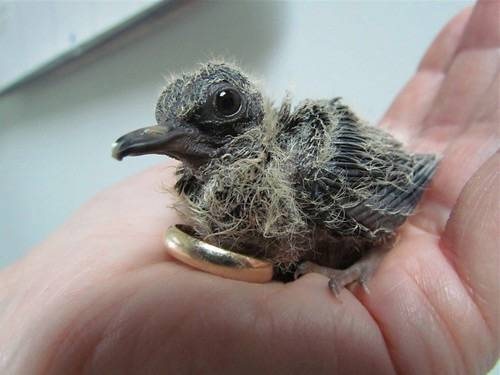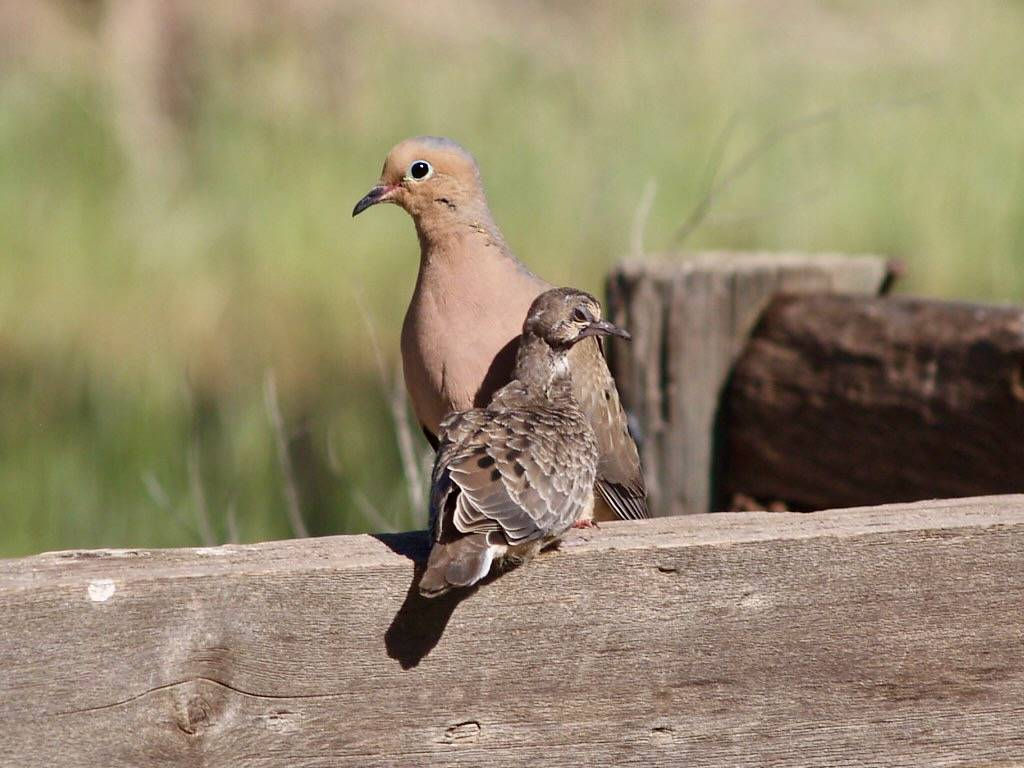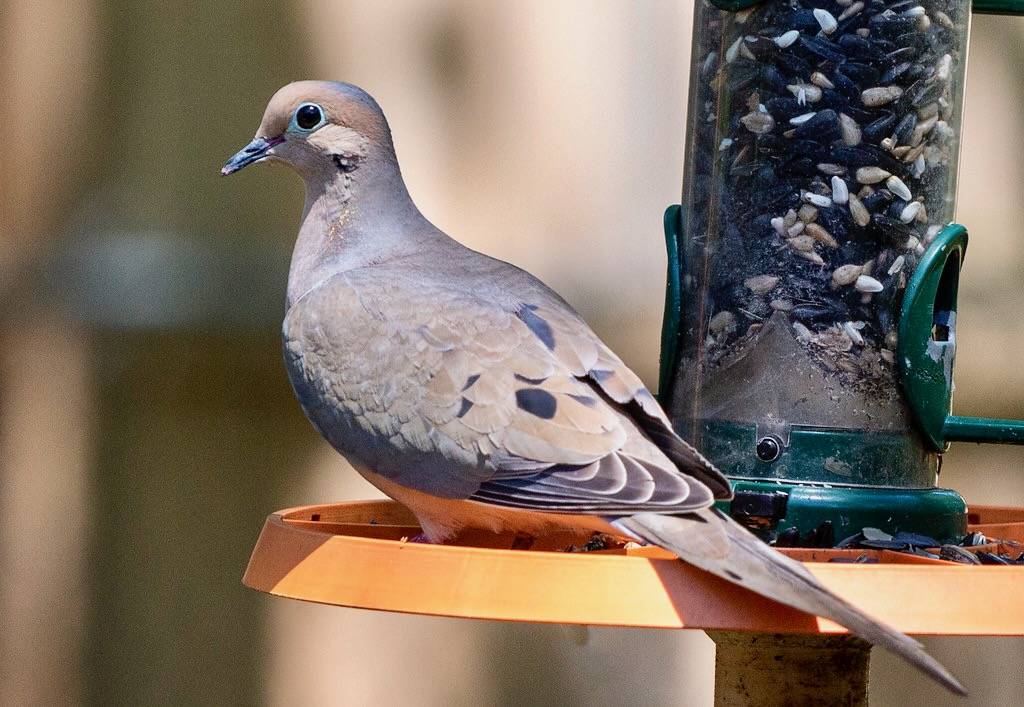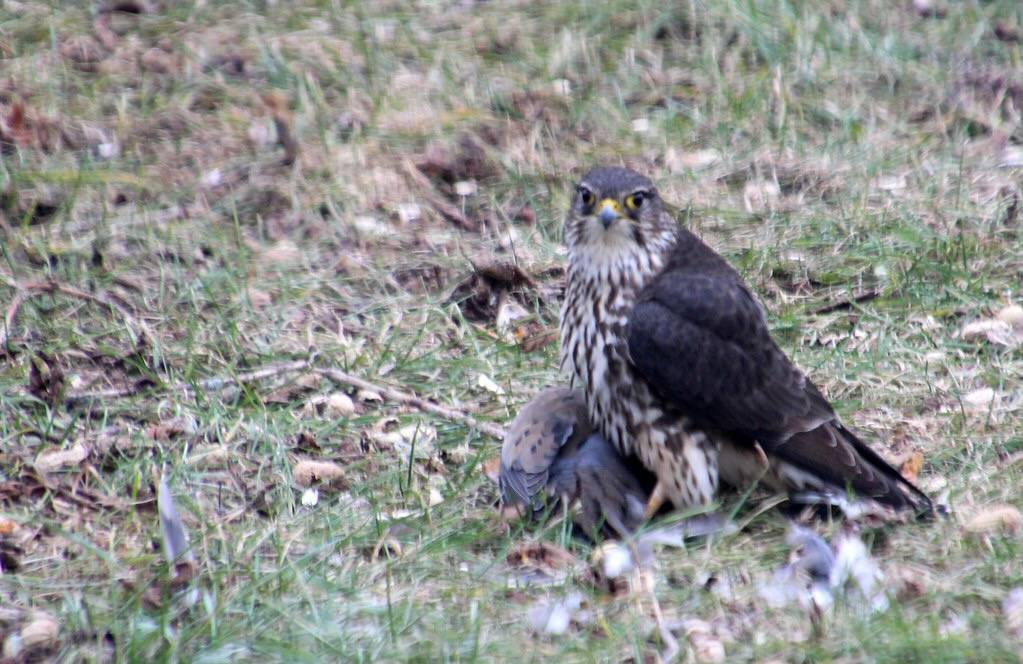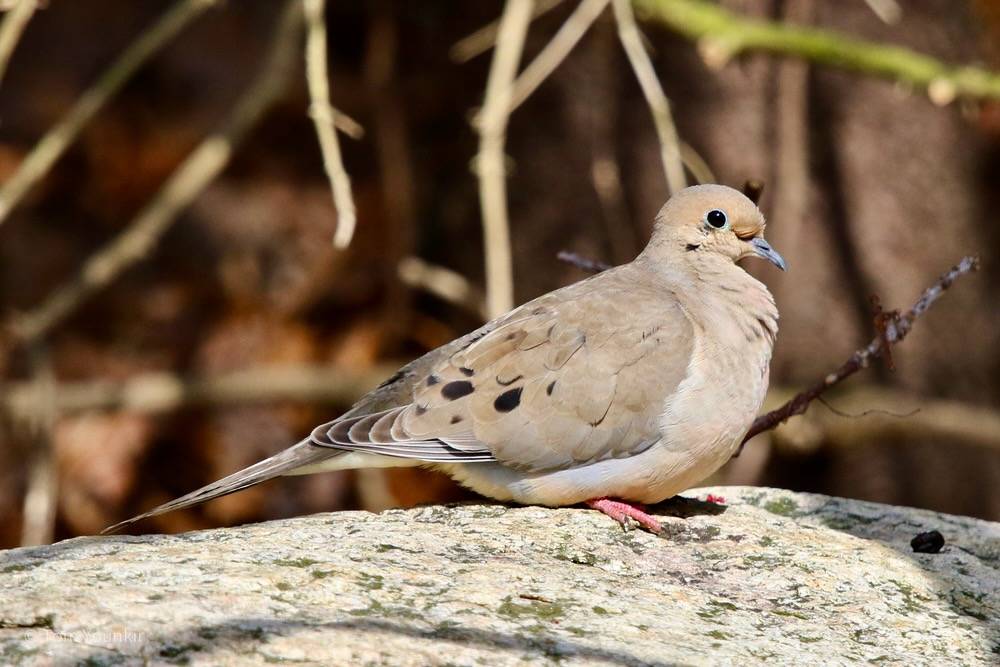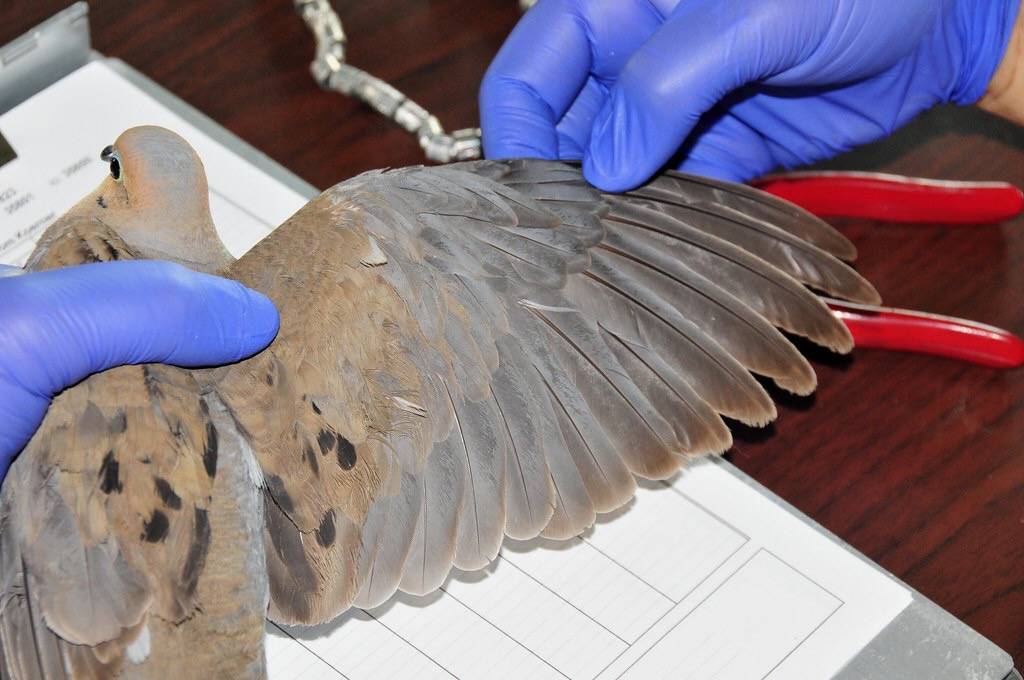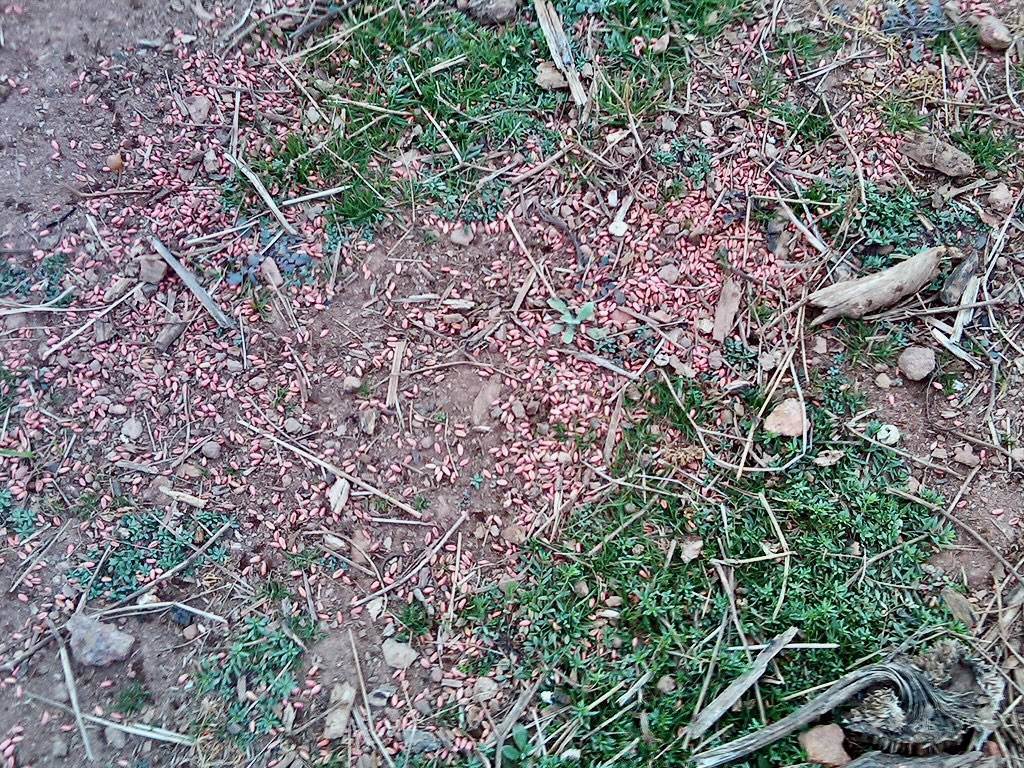Mourning Dove
The Mourning Dove can be seen at Salter Grove throughout the year but is usually not very conspicuous because its plumage is so neutral in color. During the breeding season the soft and mournful "ooooWOOOO-coo-coo-coo" of the male becomes a familiar part of the background chorus of birdsong throughout the park.
It may be easiest to see this slender and small-headed dove during the winter months. On sunny days, flocks of several to 30 doves quietly bask in the sun along the Marsh and Audubon Trails where there are openings in the ground vegetation. As a human approaches they seem to delay as long as possible before exploding into action, wings flapping noisily as they hurtle to the safety of branches above.
It is a bird of open woodland, forest edges near fields and grasslands, usually avoiding swamps and dense forest. It occurs from southern Canada to Panama with resident populations throughout most of its range. Only the northernmost populations migrate south during the winter. Both its range and habitat use have expanded as early settlers replaced forests with agricultural fields and settlements.
The Mourning Dove is granivorous, with seeds making up 99 per cent of its diet. While on the ground, it quickly stuffs seeds into its crop, a pouch in the lower esophagus, and then flies off to digest the load while perched on a branch. It is readily attracted to feeders and has long colonized suburban areas. However, although this supplemental source of food can be beneficial, it carries a high risk. Mourning Doves become easy prey for raptors that have learned to hunt at feeders.
Besides serving as a handy storage organ, the Mourning Dove's crop produces "crop milk, or pigeon milk", a highly nutritious substance that is fed by both parents to newly hatched young. The usual clutch of two eggs is thought to be limited by the ability of parents to produce enough crop milk to raise more than two squabs. Northern populations normally only produce one brood of two eggs per season but pairs in the south may produce up to six broods per season.
Data collected by the United States Fish and Wildlife Service in 2014 documented that 14,529,800 Mourning Doves were harvested by 857,300 hunters--or 17 birds per person. In other years, as many as 20 to 70 million birds have been bagged!
Despite being such a popular game bird, especially in the southern states, it continues to be abundant. Populations are carefully monitored and managed by both state and federal wildlife agencies so it would not suffer the same fate as the Passenger Pigeon, a North American species that numbered in the billions before it was hunted to extinction in the 19th century.
For more information:
https://www.allaboutbirds.org/guide/Mourning_Dove
https://www.audubon.org/field-guide/bird/mourning-dove
http://www.biokids.umich.edu/critters/Zenaida_macroura/
https://en.wikipedia.org/wiki/Mourning_dove
https://www.birdsbybent.com/////ch11-20/mourning.html
https://en.wikipedia.org/wiki/Passenger_pigeon
https://www.youtube.com/watch?v=1N9nMkZt1l0 Video of calls

